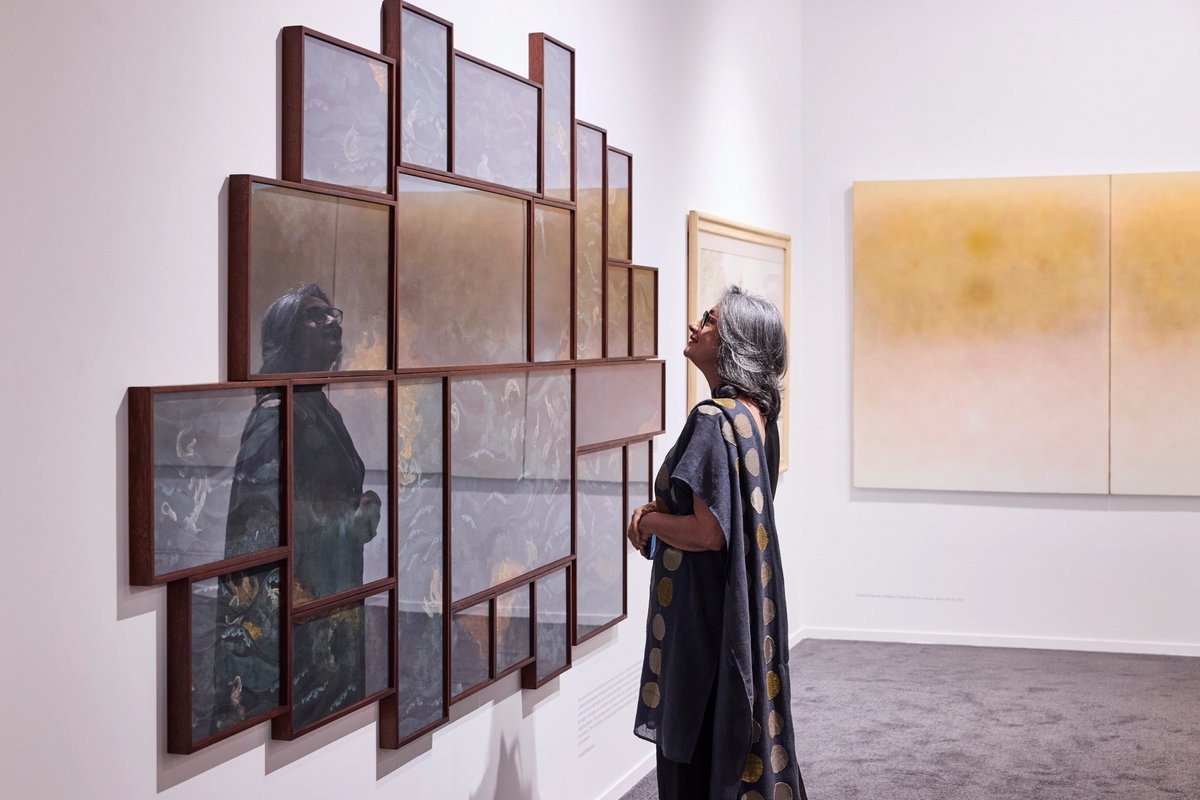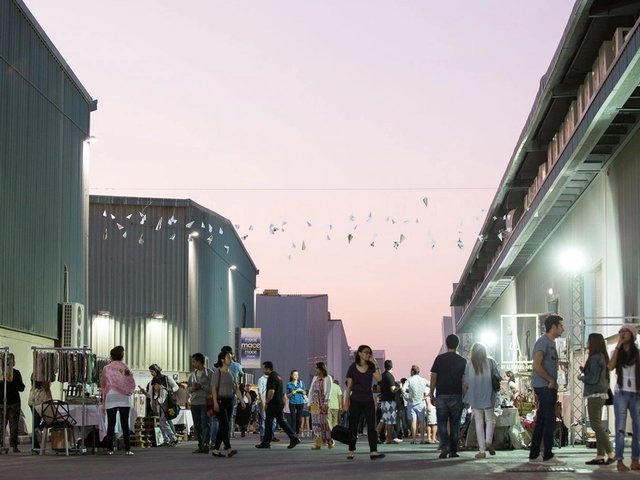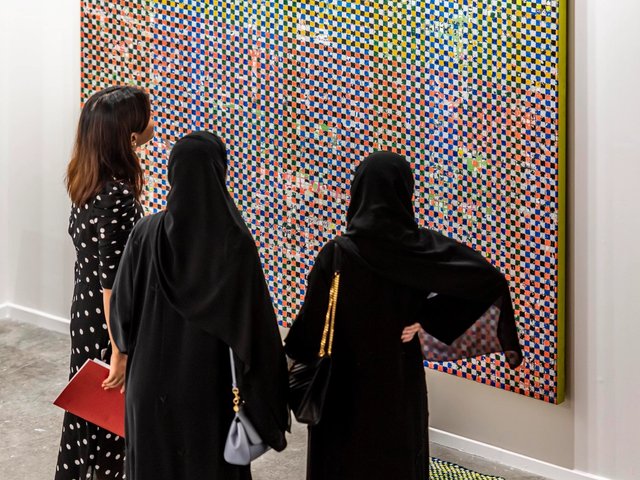Art Dubai (until 20 April) arrived this week like the canary in the coal mine: the first major art fair to open since US president Trump announced his plan for worldwide tariffs and nearly caused a global financial meltdown. But it’s questionable how much Art Dubai will reveal: sales were solid, and more broadly the fair and Dubai in general are outliers to the art market and the larger economy.
For starters, works at Art Dubai are typically less expensive than the Art Basel or Frieze fairs. Few reached beyond the million dollar mark, with most in the low six figures and thousands—a price point many felt inoculated the Dubai fair from market anxieties. Dubai itself is relatively exempt from tariff-related pressures: though oil prices have been recently lowered, it exports very little, and it is still growing as a haven for high-net worth individuals.
A slight divide emerged between Swana (Southwest Asia and North Africa) galleries and ones from further afield. The fair’s best booth presentations were from local and Arab regional galleries, with Indian galleries also making a strong showing. Galleries from the US, Europe and Latin America, some new to the fair, seemed unsure of what to bring—and quite rightly, as most collectors do not come to Art Dubai to buy the kind of international art they will find later in New York, London or Switzerland. For most collectors, Art Dubai’s primary role is to bring together art across the Swana region, a job in which it is not—yet—rivalled.
“It is important to come to an art fair in our region—not in Basel, not in New York—where the major regional galleries are showing,” says the collector Mohamed Maktabi, who runs Iwan Maktabi Gallery, a textile and carpet gallery in Dubai. “And it’s refreshing. Because we see us, our work, and our region.”
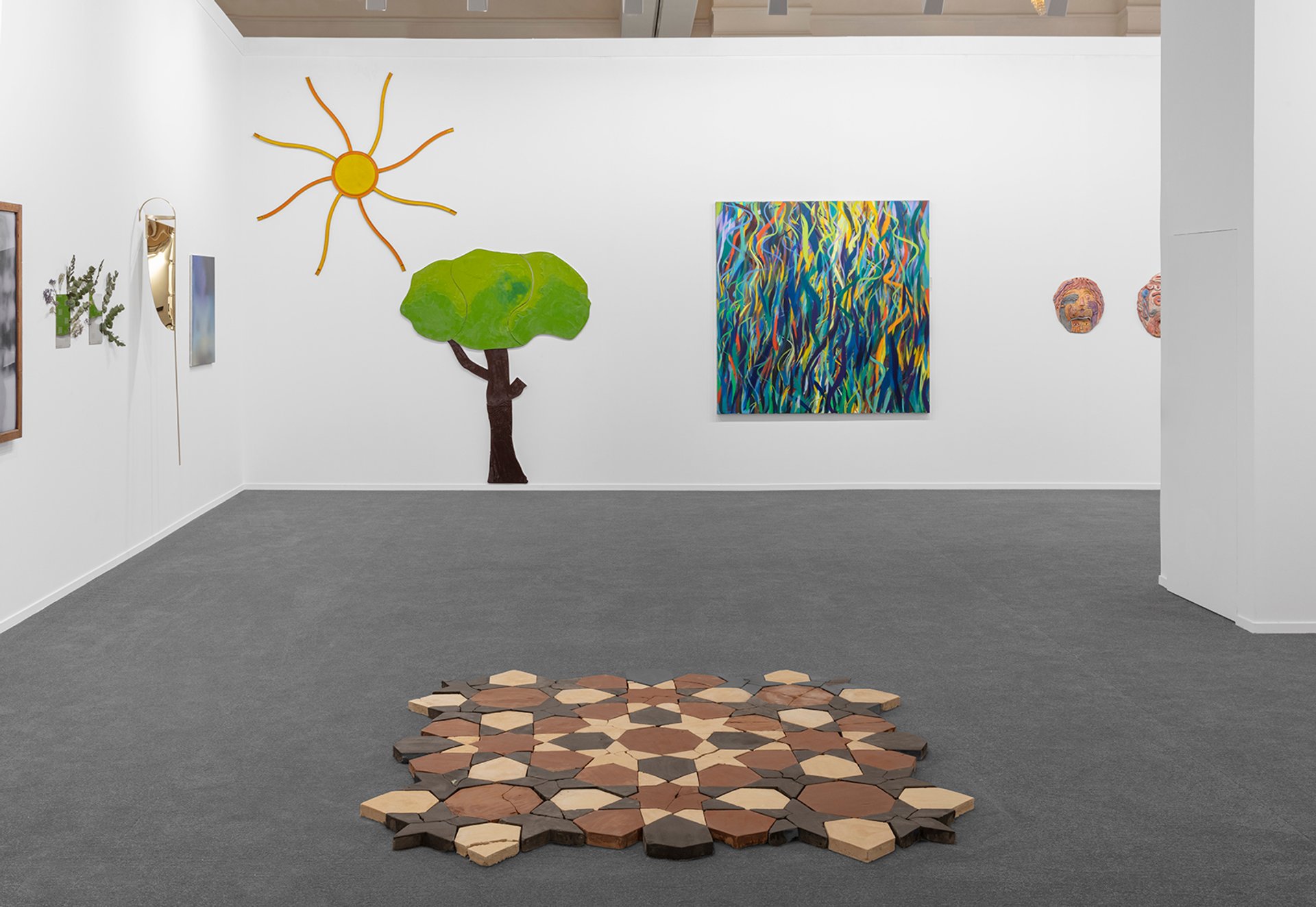
Sfeir-Semler's stand at Art Dubai
Courtesy of Sfeir-Semler
Despite this robust optimism, there were fewer standouts works than usual this year. Sfeir-Semler, from Beirut and Hamburg, has a beautiful booth including work by Dana Awartani and Alia Farid, who is also showing in the nearby Sharjah Biennial (until 15 June), which they reported as being mostly sold, and Vigo Gallery, from London, had a stunning work by the Sudanese-British artist Ibrahim El-Salahi, which on Thursday evening was on reserve for an institution.
Indeed by the close of play on Thursday, the second day of the fair for collectors, most galleries were reporting sales across the board. Dubai’s Third Line said they did very well, selling a major Rana Begum work on opening night, and Experimenter, with sites across India, likewise said they sold most of their booth by the first day. The multi-national gallery Almine Rech sold a painting by the Iranian artist Mehdi Ghadyanloo for $135,000 to $150,000, and several sculptures by the Lebanese artist Ali Cherri for around $100,000. Dubai’s Meem Gallery sold a painting by the Syrian-German painter Marwan, and Gallery One, from Ramallah, sold a gem of a painting by Laila Shawa for $30,000 to an important regional collector, though they were still waiting to sell other major works on their stall, which was a solo show dedicated to the late Palestinian artist.
Nika Project Space, from Dubai and Paris, moved several works on their stand, including a very popular series of felt moths by the Tatar artist Nazilya Nagimova, in the low thousands, and a larger felt piece for $14,000. Lawrie Shabibi, also from Dubai, sold four wall pieces by Shaikha Al Mazrou, the well-regarded UAE artist, in the $40,000 to $45,000 range, and a comparable painting by Mohamed Ahmed Ibrahim.
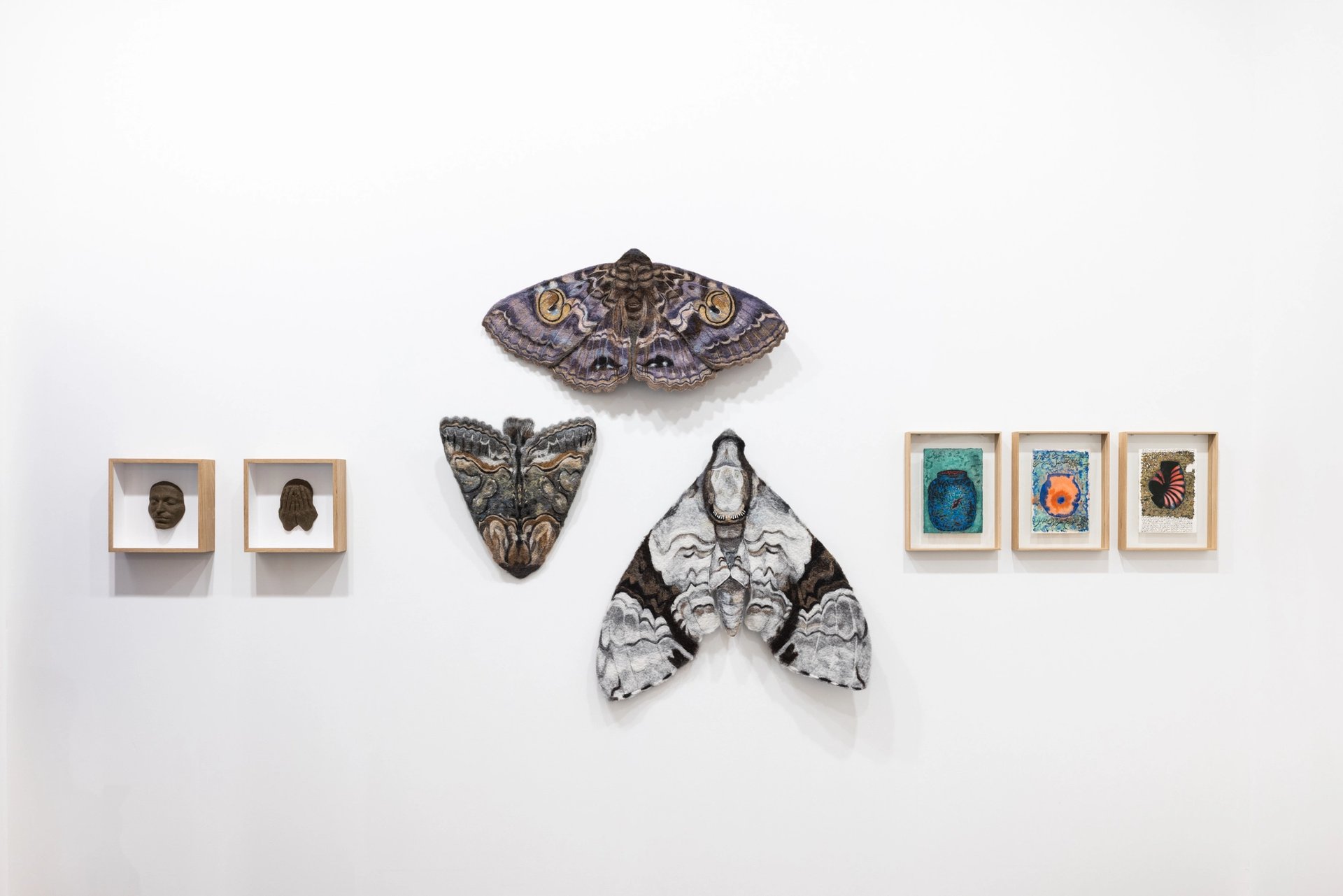
Nika Project Space presented works by the Tatar artist Nazilya Nagimova
Courtesy of Nika Project Space
At the same time, other galleries said that they were waiting to break even—in many cases, not because of lack of sales, but because prices were mid-range. And while tariffs and US Treasury bonds weighed surprisingly lightly on dealers’ minds, the two-year downturn of the broader art market was a larger consideration. Here again, a gulf seemed to separate Western galleries and Arab ones, the latter of whom still see their market buoyed by new collectors in Dubai, the growth of regional museums, and increasing attention to art from the Swana countries.
Notably, although the flight of wealthy Russians to Dubai has been a major art-world narrative, few galleries reported selling to Russian collectors. Most buyers seem to be local and regional collectors, as well as institutions. And galleries at Art Dubai Digital also reported sales, though that part of the fair has ended up serving a separate clientele.
The number of fair visitors, though, was astronomical, with many coming to the Emirates or even the Middle East for the first time, lured by growing interest in the scene, and two vast curatorial trips. And for Arab and South Asian curators, collectors, artists and art world professionals, the fair has retained its focal position.
“Art Dubai remains a place of convergence both within the region, between citizens of countries who cannot often meet easily, to a place of exchange globally,” says Aaron Cezar, director of Delfina Foundation in London. “Over my time here I have seen collectors, curators, artists, and colleagues from across all of Asia, Africa and as well as Europe. This fair further indicates that the art world is becoming multi-polar, and as the political and economic axes shift, such places will become more necessary for survival as well as solidarity.”
The fair also anchors a raft of citywide programming, with the venerable Global Art Forum taking place at the fair, Sharjah Art Foundation’s inaugural April Acts during the weekend, and new shows at the Jameel Arts Centre and Alserkal Avenue, where the galleries felt particularly strong this year. Ishara Art Foundation, whose former director Sabih Ahmed will co-curate the next edition of the Diriyah Biennale with the Jameel’s Nora Razian, held a well-received retrospective by Shilpa Gupta. Another stand-out was the exhibition of the late Palestinian photographer Majd Arandas, who was killed while reporting the war in Gaza, at Gulf Photo Plus (all proceeds from GPP’s sales go directly to his family, who are now in Egypt).
Moreover, contradicting the stubborn myth of the Dubai scene being brand new, the Third Line celebrated its 20th birthday and Green Art Gallery turned 30. Its director, Yasmin Atassi, took over the gallery from her mother Mayla Atassi, who opened it in Jumeirah long before the current configuration of the Dubai art scene emerged. The longevity of these spaces perhaps contributed to the Dubai sense of optimism around any slowdown.
“We’ve been here before,” says Isabelle de Caters, of Gallery Isabelle, who first opened a gallery in Dubai in 2006. “We remember the boom times in the 2000s, when everyone was buying, and then the crash of 2008. We’re used to ups and downs. Whatever happens, we’ll be fine.”


